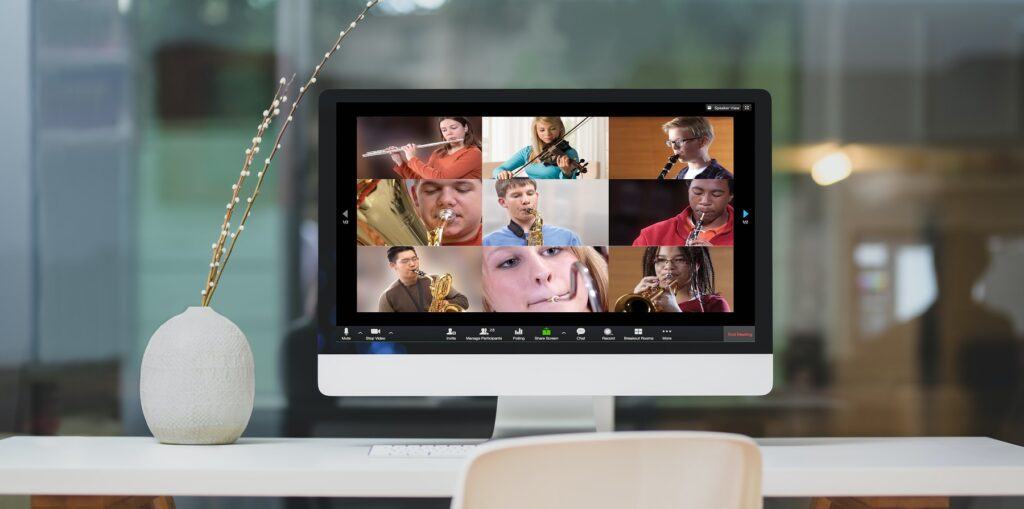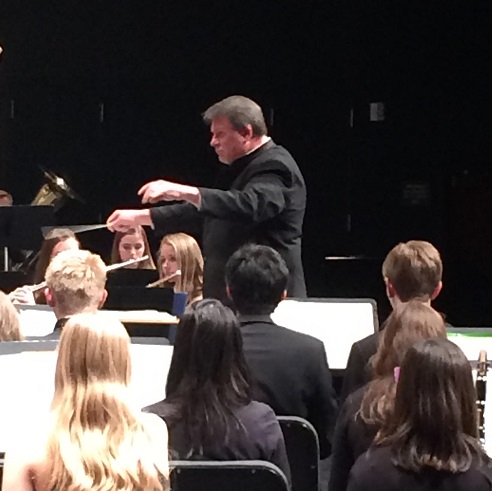Why You Need to Be a Good Conductor
Conductors do more than keep time. Here are five reasons to work at your conducting skills so you can lead and inspire your ensembles.
If you are responsible for one or more large ensembles, conducting is one of the most important parts of your job. Your performance as a conductor is a window into your skills as a teacher. That’s why it is vital to be a good conductor for your students. By “good,” I don’t mean you passed Conducting 101 in your undergrad music education program. “Good” means that you can show the intent of the sound in your head through your gestures (explaining it in words doesn’t count!).
I have seen many conductors who are blessed with incredible rehearsal techniques and a musical ear, but their conducting was basically the pattern with an occasional dynamic. This isn’t good enough.
Here are the five reasons why you must be a good conductor for your students.
1. At Least You Did Something

You may have heard that the role of the conductor is to look like the music. The greatest conductors who you probably love to watch all look like the music personified. There is some truth in that statement, but that idea should be approached cautiously.
If you are of the mindset that you need to look like the music, that may get in the way of what your ensemble needs. If you have choreographed every move of each piece you conduct, you may look like the music you listened to, but do you look like the sound that your ensemble is creating? You need to look like the music in a way that will help your group sound the way you want them to.
I was lucky to participate in a conducting masterclass in Sicily where I conducted the first movement of Holst’s Second Suite in F. I had come up with a vision of what I thought the movement should sound like and was ready to take my shot at conducting. I started, listened, and showed the group articulation, the shape of the line, dynamics, etc.
When I was done, the maestro said, “I don’t know what you were trying to do, but at least you did something.” Ouch — I’ll try to take that as a compliment!
I encourage you to try something that can help your ensemble. Maybe it works, maybe it doesn’t, but at least you did something. And you can do something else next time.
2. Made for All Ages
No matter what grade level you teach, from elementary to college, being a good conductor is important for your students. As students get older they understand and respond more to nuances in your conducting, but don’t count out the younger students. Elementary students listen and engage in music in various ways such as drawing and dancing to music the way they hear it. By the time students start playing instruments, they can understand the gestures you show because they can connect the idea of motion to music.
You might think, “But my group can’t play in time unless I’m mirroring with both my hands the whole time.” I feel like that sometimes, too (this is where not conducting can be extremely effective, but that’s a topic for another time). Sure, depending on the age and ability level of the students, you may feel like you need to focus on some things more than others — in this case, time. However, there are other aspects of the music that students can respond to as well. Who knows, maybe if they start to include other musical aspects into their playing, it may fix other issues.
When I work with middle schoolers, I do not change my conducting but rather my focus because their needs are different. Like I said before, students are capable of understanding. They get bored seeing the same thing the whole time. Just think of how many TikToks they watch in five minutes. Their attention spans can be very short.
If you are conducting big all the time, that is all they will see and all you will hear. When they see it all the time, they will stop paying attention, which might be shocking because kids pay attention all the time, right? However, if you do something different, they will notice and will watch, analyze and respond. They can do it. And you can let go of all the control.

3. Engaging Rehearsals
Being a good and effective conductor will keep your rehearsals fast-paced and engaging. How many times have you played in a group where the conductor started telling you what to fix even before the third trumpets realized everyone had stopped? I’m guilty of doing this when I’m in a rush.
Imagine how much time you could save if you showed your students something instead of telling them. If you are so focused on sounding like the music that you have to stop and explain to your group what you are doing — “When I do this, you should sound like that” — that defeats the purpose of being a conductor, it eats up rehearsal time, and you run the risk of fixating on your choreography instead of the music. I, for one, think I am a better musician than dancer!
4. Inspire

Part of being a good conductor includes score study. Through score study, you begin to understand the ins and outs of the composer’s intent and develop an image of the piece and the gestures that will help you communicate the music. If you simply conduct a four pattern and do nothing else, you are doing a disservice to the music and all the work that you put in to understand the piece.
One time, my band was working on a piece, and the students seemed disengaged; they were phoning it in. They weren’t playing the piece — which should have been very easy for them — at the level that I expected from them. As a result, I changed my conducting. Not to be more musical but to be less, and they sounded even worse (how was that possible?).
I then said to them, “If you don’t care about the music and how you sound, why should I care about the music and how I look?” This could very easily have gone the other way.
If you don’t care about the music and showing it, why should they care about playing it musically? If you are simply conducting the beat pattern of the music, they will play the musical equivalent of that, and you will be disappointed.
What your ensemble needs may vary from week to week, day to day or even moment to moment, and you must meet those needs. In my article about unconventional rehearsal techniques, you can — and should — focus on the music immediately. Do not wait for students to play perfectly in time before you begin working on and showing the musical nuances.

5. Make Them Want to Play for You
How many times have you yelled “Watch!!!” in the middle of a piece? Hopefully, they weren’t during a concert. And how many times did that fix anything? If it was more than zero, I’m impressed.
In general, students want to do well for their teachers. I truly believe that. Do they always follow through on that? Of course not — they’re just kids!
Although their desire to do well is natural, don’t give them a reason not to try. Remember, you are also performing with them, and every time your group plays, it is a performance. One of the greatest compliments I received from a dear friend of mine was: “You always give so much energy and emotion into your conducting in rehearsals, and just when I don’t think you can give any more, you somehow give more during the performance.”
Your students deserve your all. When you do this, many things will happen — students will respond, you will create a stronger connection, and they will give it their all. All this needs to happen just once for students to want to play for you forever.

How You Can Get Better at Conducting
There are many ways to improve your conducting. It all depends on what you want to improve. The cheapest way is to record your rehearsals and performances and watch them afterward. It is uncomfortable and awkward, but necessary. Unrelated to conducting, I once viewed security footage at the school and had the speed at 2x. The assistant principal said, “Here you come down the hallway.” I was mortified! I looked as if I had never walked in my life. Why did I move like that? After all, I’ve been walking for at least a few years by now. Regardless of how you look, it is the truth. Watch the videos of yourself and then send them to trusted colleagues for feedback.
Another option is to attend conducting symposiums with some of the best conductors. It is extremely rewarding and humbling to work with people much better than you and watch them work with other conductors.
And finally, practice. Practicing conducting may feel awkward at first but it gets better— trust me. People you live with will get used to it, too. It is weird to conduct without an ensemble, but as a result you will be leading, and not following, in your rehearsal.















